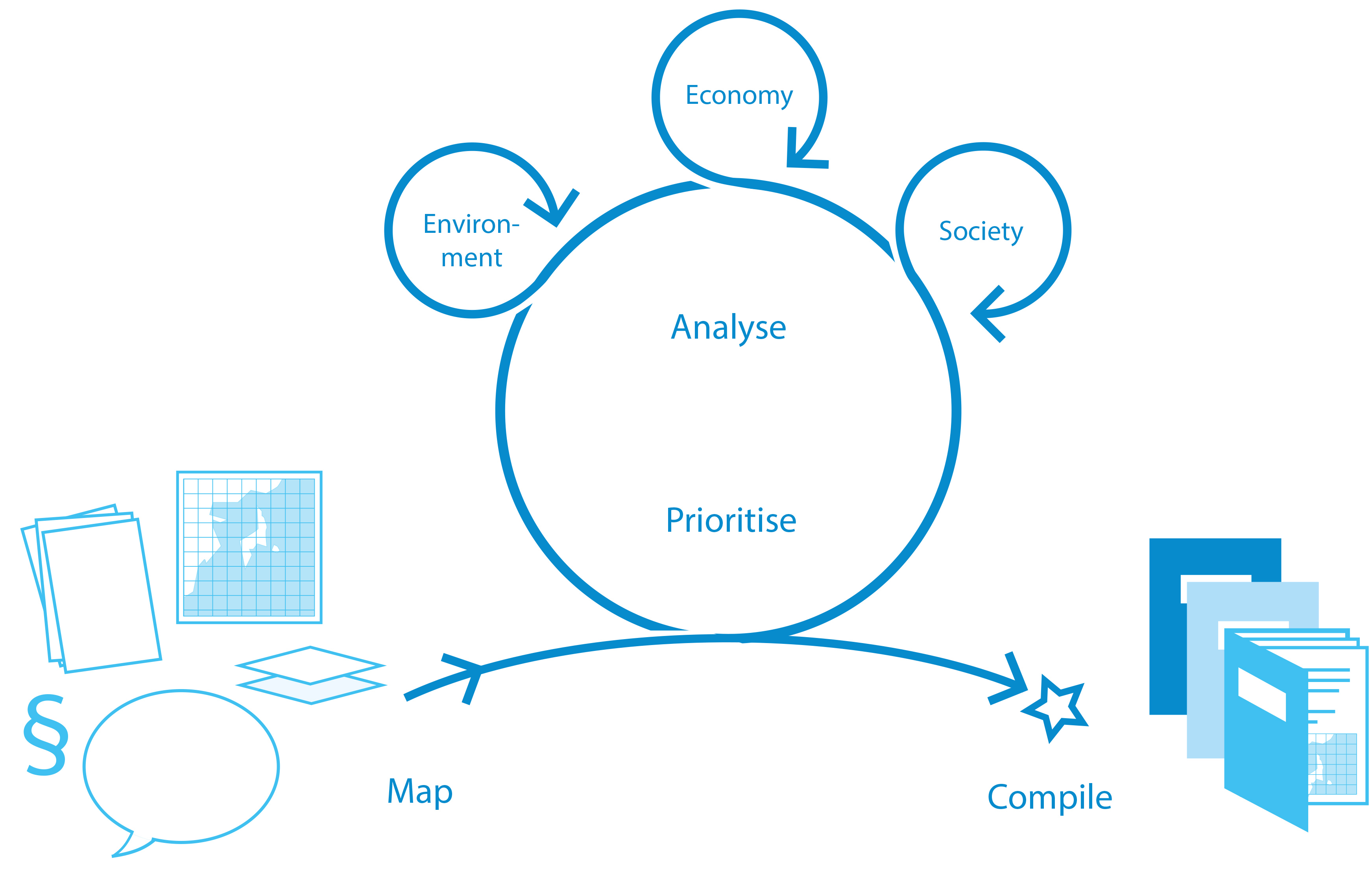Development of plan proposals
Developing and evaluating planning evidence, analysing alternatives and consequences and communicating with different stakeholders are some important parts of the work to develop plan proposals.
The planning approach is future-oriented and based on holistic assessments. Planning objectives, claims, conditions and expected consequences of interests and activities are assessed at a general level and for specific geographical areas. The approach can be described as a process with different steps, all of which include dialogue and collaboration with the stakeholders involved. Re-takes are done between the different stages; Mapping, analyzing, prioritizing and compiling. A large amount of data is produced and compiled during the course of the work, including through analyses and separate reports.

Approach to planning.
The first plans were developed during several years and were submitted to the Government in December 2019.
Dialogue in several steps
Consultation of marine spatial plan proposals and related environmental impact assessments are held with stakeholders that can be assumed to be affected by the plans. It is open to anyone to submit comments. Consultations are also held with other countries as the plans can be assumed to have a significant and cross-border environmental impact. Read more on the pages on international marine spatial planning.
Once the planning documents have been adjusted and further developed after the consultation, they are made available for review.
In the first planning cycle, consultations were also made in the preparatory phase and about early drafts. You can read more about the preparatory phase a little further down.

Dialogue steps during the first planning cycle. The blue circles show dialogue steps in the preparatory phase. The yellow circles show the dialogue steps during the process of preparing plan proposals. The green circle shows the preparation and decision of the government.
Impact assessments
Impact assessments are carried out as an integral part of the planning process for several years. The Marine Spatial Planning Ordinance and the Environmental Code require a strategic environmental assessment in marine spatial planning and to consult environmental impact assessments reports. According to the same regulation, the proposal for a marine spatial plan must also report the implication and consequences of the use of the marine area as planned. Since the purpose of the marine spatial plans is to contribute to long-term sustainable development, there is also a need to assess the sustainability of the plans. This is why we need to develop environmental and sustainability reports as well as socio-economic analyses of the marine spatial plans.
The purpose of the environmental impact assessment and sustainability assessment is to provide a good overall picture of the likely effects of the marine spatial plans. They also provide a picture of how the marine spatial plans can contribute to long-term sustainable development and provide a basis for the continued preparation of the plan proposals.
The Swedish Agency for Marine and Water Management has developed a planning tool that is used in the development and impact assessment of marine spatial plans. Here you can read about Symphony – a method for ecosystem-based marine spatial planning.
Preparatory phase
The first planning cycle began with a preparatory phase.
A Current status report was developed that describes planning conditions and conveys a cross-sectoral perspective as a starting point for the first cycle of national marine spatial planning.
The Marine Spatial Planning Roadmap (in Swedish) includes planning goals and planning strategies, as well as essential issues to manage within each planning area. It reports the steps in the work, i.e. the process of drafting marine spatial plans, including the work on impact assessments. It also contains a delimitation of the environmental impact assessment that was drawn up in connection with the first plan proposals.
The report Applying an Ecosystem Approach in Marine Spatial Planning (in Swedish) describes how an ecosystem approach can be applied to marine spatial planning. The application places demands on what we are to achieve and how the planning process should be implemented. An important part is to integrate environmental assessment and economic analysis into planning.
Experts from central authorities, coastal County Administrative Boards, municipalities and regions have worked in six thematic working groups to gather to discuss sector perspectives and work out planning bases for different interests. The work resulted in thematic reports.



